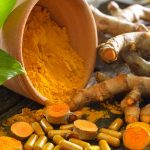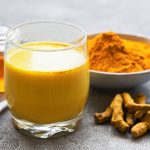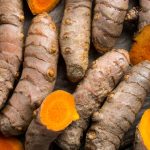Joint pain, often associated with conditions like arthritis, can significantly impair the quality of life. For those suffering from this chronic pain, finding effective relief is paramount. While conventional treatments such as medications and physical therapy are commonly recommended, many individuals explore alternative remedies in hopes of finding natural solutions. This comprehensive article will delve into some of the most popular alternative remedies for joint pain, examining the scientific evidence supporting their effectiveness. The focus will be on copper bracelets, turmeric, and other promising natural supplements.
One of the earliest known alternative remedies for joint pain is copper bracelets. Copper has been utilized for medicinal purposes since ancient times, and its application to arthritis dates back to the late 1800s. The essential mineral copper is crucial for the formation of red blood cells, iron absorption, and the health of several body systems, including the nervous, immune, cardiovascular, and skeletal systems. Given the autoimmune nature of diseases like rheumatoid arthritis, the theory that copper’s anti-inflammatory properties can help reduce joint pain seems plausible to some.
However, the scientific community remains divided on the efficacy of copper bracelets. Anecdotal evidence suggests that some individuals experience relief from joint pain, but rigorous scientific studies have not consistently supported these claims. It is vital to recognize that copper bracelets should not replace conventional medical treatments. Moreover, individuals should be cautious of skin irritation or discoloration caused by prolonged use of these bracelets.
Another widely discussed natural remedy for joint pain is turmeric, a bright yellow spice derived from the root of the Curcuma longa plant. Turmeric has been used for centuries in traditional Ayurvedic medicine to treat various ailments, including arthritis. The active compound in turmeric, curcumin, is credited with its purported anti-inflammatory and antioxidant properties.
Scientific research provides a more encouraging outlook on turmeric’s role in alleviating joint pain. Numerous studies indicate that curcumin may help reduce inflammation and pain associated with arthritis. For example, a systematic review published in 2016 recommended a daily intake of 1,000 mg of curcumin for treating arthritis symptoms. Curcumin supplements, often combined with black pepper to enhance bioavailability, are a common way to incorporate this compound into one’s diet. While turmeric and curcumin are generally safe, they can cause mild side effects such as digestive upset or headaches in some individuals. Consult with a healthcare professional before starting any new supplement regimen is advisable.
It is important to note that turmeric is not the only natural supplement touted for its potential benefits in managing joint pain. Omega-3 fatty acids, found in fish and flaxseed oils, are known for their anti-inflammatory properties. These essential fats may help alleviate symptoms of rheumatoid arthritis and osteoarthritis. However, individuals taking blood thinners should consult their doctor before using omega-3 supplements, as they may increase the risk of bleeding.
Glucosamine and chondroitin sulfate are other supplements frequently mentioned in joint health. Naturally found in human cartilage, these compounds are believed to support joint function and alleviate pain. Research on their effectiveness is mixed, with some studies suggesting modest benefits and others showing no significant improvement in symptoms. Despite the varying opinions, many people with arthritis find these supplements worth trying as part of their overall treatment plan.
Vitamin D is another nutrient that has garnered attention for its potential role in joint health. Deficiency in vitamin D has been linked to an increased risk of developing arthritis, and supplementation may help improve symptoms in some individuals. However, monitoring vitamin D levels and avoiding excessive intake is crucial, as it can lead to toxicity and other health issues.
Cryotherapy, a treatment involving exposure to frigid temperatures, has also gained popularity as a potential remedy for joint pain. Proponents claim that cryotherapy can reduce inflammation and provide pain relief. While some studies suggest benefits, more research is needed to confirm its efficacy and safety for long-term use.
In addition to these alternative remedies, lifestyle modifications play a significant role in managing joint pain. Regular physical activity, maintaining a healthy weight, and following a balanced diet rich in anti-inflammatory foods can help reduce the burden of arthritis. Physical therapy and exercises tailored to improve joint mobility and strength are also essential components of a comprehensive treatment plan.
In conclusion, while alternative remedies like copper bracelets and turmeric offer potential benefits for joint pain relief, it is crucial to approach them with caution and skepticism. Scientific evidence supporting their effectiveness varies, and these remedies should complement, not replace conventional medical treatments. Consulting with healthcare professionals and adopting a holistic approach that includes lifestyle modifications and evidence-based therapies is the best strategy for managing joint pain and improving overall quality of life.
For more information on alternative remedies for arthritis, you can visit the following links:
Physiotherapy Matters
Medical News Today
Healthline
Mayo Clinic
Arthritis Health









